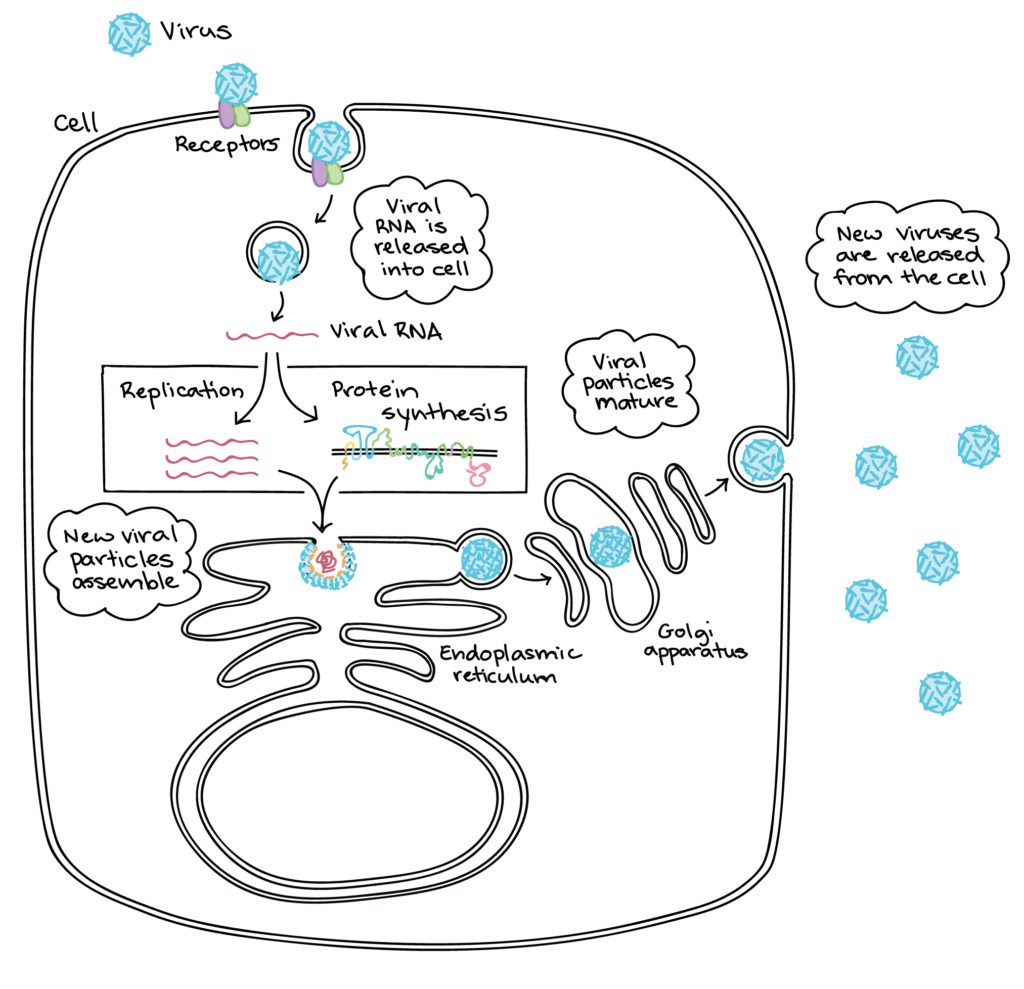by Mariah Jones
As we find ourselves still navigating through this pandemic, every day we learn more about the SARS-CoV-2 virus, which causes the disease known as COVID-19. The latest headlines are filled with concern over the new SARS-CoV-2 variants that are popping up. Are we going to experience another spike in cases driven by the new variants? Does this mean that we are now fighting multiple viruses at once? Well not quite. Understanding the answers to these questions first requires learning about how viruses can develop different strains.
A virus can sometimes be referred to as “mutant”, “variant”, or “strain”. These terms mean that the virus in question contains a mutation that makes it different from the virus it originated from. “Mutation” can seem like a scary word, especially when used in the media. However, mutations are completely normal and are necessary for evolution.
So, let’s first define mutation. A mutation, according to the National Human Genome Research Institute (NHGRI), is described as “a change in a DNA sequence”. As we know, DNA is a genetic code that serves as the instruction manual for life. A real-life analogy for a mutation would be accidentally using brown sugar to make your cookies when the recipe called for white cane sugar. This mistake can change the way the cookies bake and taste.
Cells can develop mutations all the time because they are living, and living things constantly replicate and repair their DNA. Every time DNA is replicated or repaired, there is an opportunity to make a mistake, or mutation. The interesting thing about viruses is that they are not considered to be alive, because they cannot survive without a host organism. So how can their genetic code change? An analogy we can use to understand the relationship between viruses, their hosts, and mutations is to think of the virus like a cake and the host organism like the baker. Without the baker, it’s not possible for the cake to be made. However, there can be mistakes (mutations) made when reading the recipe (the virus’ genome). In other words, the host cell may make a mistake reading the viral DNA/RNA, occasionally resulting in a mutation. So, although the virus is not alive, it can still gain mutations along the way. Mutations can be harmful or advantageous or neutral to the survival of the virus, but this is not something that the virus has an active role in determining.
The mature viruses produced by the infected host cell will not be identical to the original virus that invaded that host–they will contain mutations. It is not until that mature virus goes off to invade a host of its own that it will find out if its mutation is an advantage or not. Most of the time, these mutations do not impact the way the virus carries out its life cycle, including its transmissibility and impact on the host organism (in this case, humans).

So how does this apply to Covid-19? According to the CDC, there are currently three “variants” of the Covid-19 virus that are of concern. These variants (UK B.1.1.7, South Africa B.1.351, and Brazil P.1) have multiple mutations that allow them to spread more easily. This is an advantage for the virus because it increases the number of potential host cells to infect. Although variants are a part of the natural process, their emergence can be controlled. Higher cases of infected individuals only increase the chances of more mutations that can lead to variants. Every infection is an opportunity for the virus to begin a new life cycle. The only way to control the number of variants is to control the spread of the virus and its disease. It is critical that proper prevention is being taken even with a vaccine available. The current vaccines on the market can offer protection against the emerging variants, and it is critical to decrease the number of people infected. Fewer infected individuals mean less opportunities for the virus to mutate.
All cells will have some sort of mutation eventually. Mutations are an expected evolutionary tool that viruses, bacteria, and other cells use to adapt to their environment. Of course, there will always be concern when variants emerge; however, the questions we should be asking ourselves about variants should not be “If?”, but rather “Where?” and “When?”.
